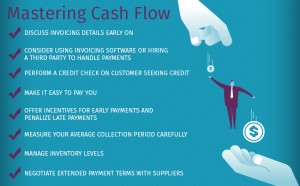— September 27, 2017
We’ve all heard the phrase, “content is king.” The lessons of this simple adage are easily seen in the digital space as NetFlix and Amazon (amongst others) have started creating original programming content to drive viewers to their sites and services. But, it holds true for marketing small businesses as well. Small businesses have produced informative blogs, articles, videos, eBooks, and infographics in the hopes of capturing the attention of clients and new potential customers.
If you’re relatively new to introducing new marketing tactics to your small business and aren’t sure where to start, these content marketing ideas and steps can help spark your imagination or guide you in the right direction.
Why is Content Marketing Important to Small Businesses?
Content marketing is a relatively inexpensive means of exciting interest in potential clients and maintaining a relationship with current clients. By providing your specialized knowledge to your clients for free (or in return for contact information), you are instantly generating value before the client makes a purchase. Because posting content online and indexing it in a search engine is virtually costless, the potential return on investment (ROI) for content marketing is high. Content marketing not only helps to engage new and existing customers, but encourages content sharing on social media and by word-of-mouth, which can only contribute to increasing your audience and viewers.
Steps for Creating Killer Content
- Who are your customers and what do they need? Know who your target audience is. Make sure that your analysis is data driven. If you’re a well-established business, go through your client lists regularly to challenge your conceptions of a prototypical client and to detect shifts in your client base. If you’re a startup, talk to prospective clients as early as possible to gauge interest levels, identify pain points, and figure out how you can meet their needs. What are they looking for? What kind of information could be useful to them? This will help you decide on your content marketing topics as well as the platform(s) you use to spread awareness of your content.
- Set your goals. Each piece of content that you create needs to be created with a specific goal in mind. Do you want to attract new customers? Do you want to increase sales from existing clients? Do you want to test demand for a potential new product? Content created for existing clients must differ from content written for prospective clients unfamiliar with your services. Content emphasizing great ways to use your core product may increase usage of that product, but is unlikely to drive interest in the rest of your product offerings.
- Select key performance indicators (KPIs) that match your goals. If you’re looking to attract new customers, keep an eye on contact forms submitted or calls from prospects. If you’re looking to increase sales, keep an eye on the number of purchasers who made a purchase after viewing your content.
- Create quality content in a form that your audience prefers. When drafting your content, think quality not quantity. It might be tempting to get as many blogs or videos out as possible to increase your reach, but no one will want to read or view poor quality content. It just won’t result in the attention or engagement you are seeking. You want content that people will want to ingest and share. Take the time you need to make sure you get the results you want. Consider a variety of formats when creating content. Some audiences prefer long blogs over watching short videos. Others prefer listening to podcasts on their way to work.
- Regularly release content and track results. While you can gain a lot of mileage from even one successful piece of content, for best results, you’ll want to create valuable content on a consistent basis that has users returning to your site or social media account. Create a content marketing or editorial calendar and a process to ensure timely creation and publication. Track analytics to see what content has the best result in terms of the KPIs that you selected. If you don’t have an eye for data, you can always hire a part-time virtual marketing professional to do it for you.
- Recycle successful content. Don’t be afraid to repurpose your existing content. If a particular topic did very well, use it again! Recycle a successful blog by turning it into an infographic, or take an older video and re-use it to create a free downloadable eBook. You can even use your existing digital content to create newsletters or brochures.
![Content Marketing for Small Business [Infographic] Content Marketing for Small Business [Infographic]](https://www.onlinesalesguidetip.com/wp-content/uploads/2017/10/Content-Marketing-for-Small-Business-Infographic.png)
Content marketing, put simply, is images and written pieces that people actually want to look at and ingest rather than advertisements people are forced to see, which is what makes it so valuable if you are a small business. If the time and effort is invested into creating and sharing high quality content, your material can yield strong opportunities with its reach and ROI.
Digital & Social Articles on Business 2 Community
(97)
Report Post




